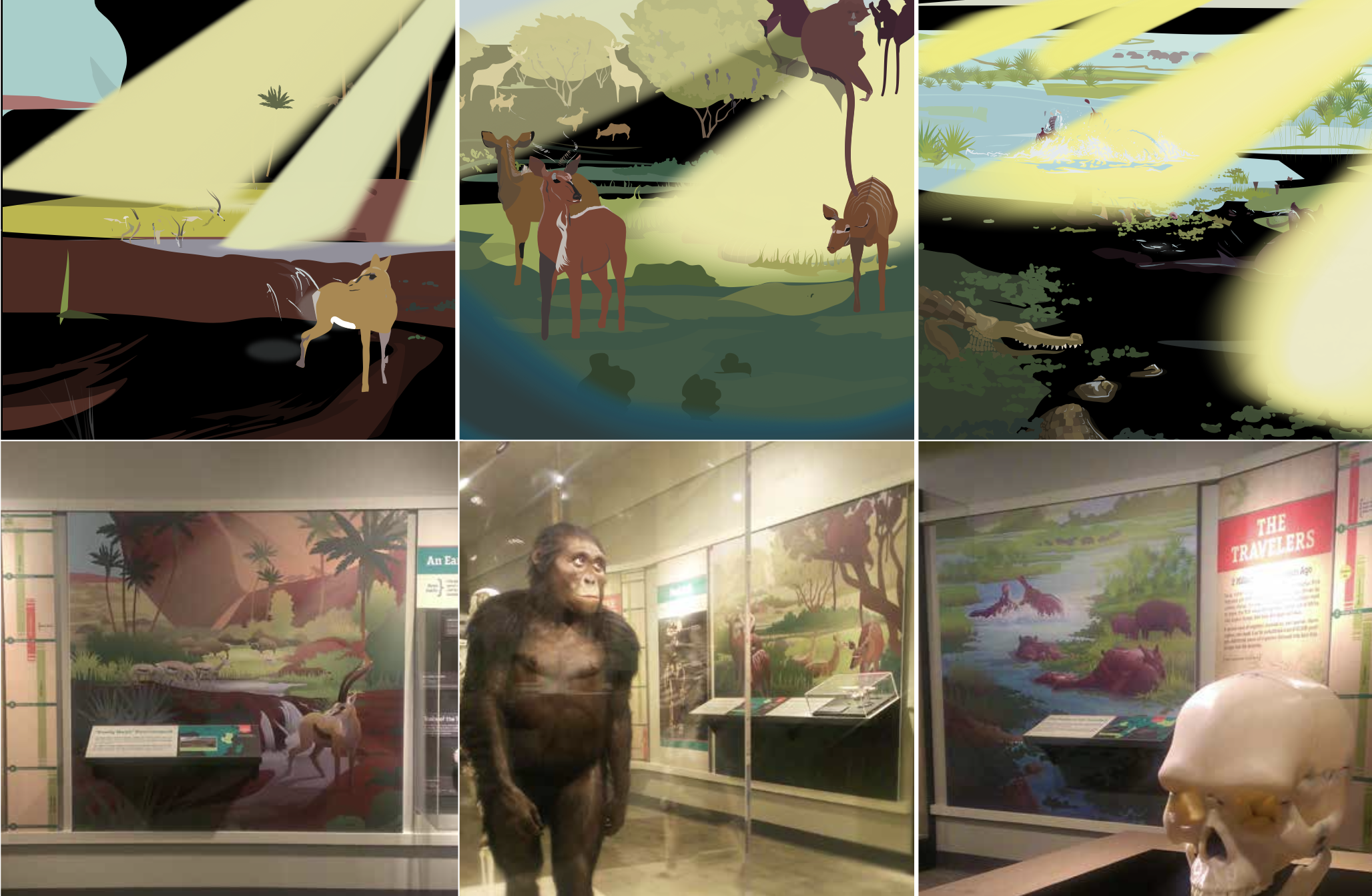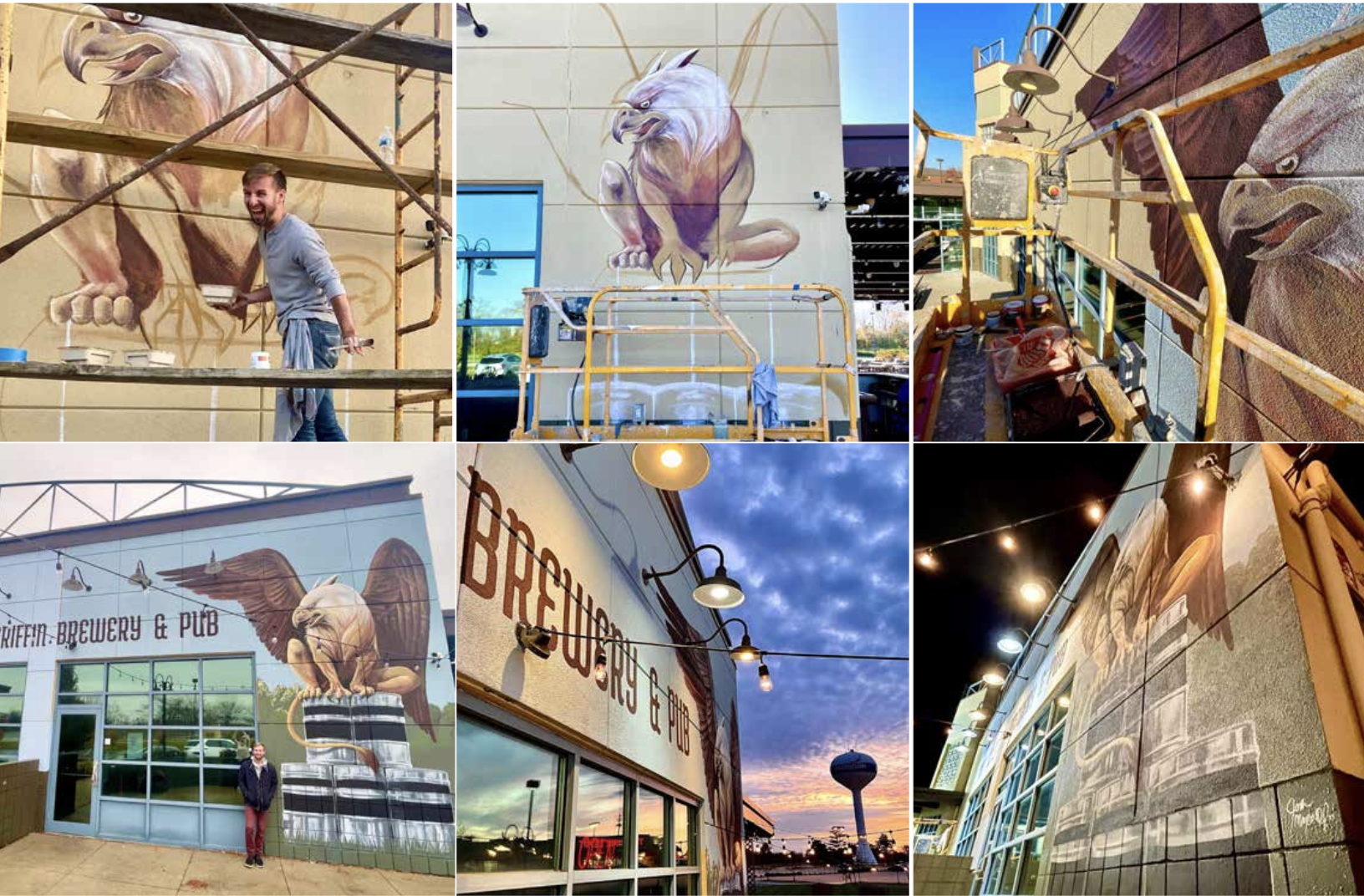Meet Josh Maxwell
Josh Maxwell is an accomplished scientific and biophilic artist exploring the intersections of art, science, sustainability, and the harmony between humanity and the natural world. With a keen sense of how built environments affect the mind, body and spirit, Josh explores the methods and modes of reconnecting our selves and our souls back to the natural world through striking and impactful visual displays challenging one’s sense of place, space, scale, and the perceived notion that humanity is separate from nature. Josh’s work is focused on exploring the intersection of art, science, and sustainability, with a particular emphasis on the harmony between humans and the natural world. Through his innovative mixed-use of mediums such as traditional oil and acrylic paintings, wood and stone sculpture, exhibit design, large scale murals, and landscape architecture, Josh creates moments of intimate observation and whimsy curiosity that inspire pause and reflection. Josh’s work promotes a more discerning emotional awareness of our well-being and that of the ecological world in which we impact. By challenging our perception of place, space, and scale, he creates a powerful connection between art and nature, inspiring viewers to become more deeply connected with the world around them. Josh has collaborated with some of the most notable institutions and communities in the field of natural sciences, including Cleveland Botanical Gardens, Cleveland Museum of Natural History, Cleveland Metroparks Zoo, Cleveland Metroparks, Sustainable Cleveland, Kelley’s Island State Park, The Woods Hole Oceanographic Institute, and Edible Cleveland Magazine. His leading-edge artwork informs, educates, and engages audiences, helping to reconnect people with the natural world.

Creative Impact Fund Project: Rooted
The creative vision for the project is to produce an oversized series of flora and fauna of the hyperlocal neighborhood, and that of the deep connection Slavic Village holds for the Czech and Polish communities. The specimens would include plants that residents would assist in identifying as core to their heritage for things like cooking, holidays, and the presence of the natural world found in Poland. The Polish affinity for herbs has a long history, but it is also very much in tune with the modern ideas of healthy, natural living. Herbs are the oldest treatment out there, and folk medicine has made use of them all around the world since time immemorial. In Poland, traditional remedies have always been connected to the plentiful fields and forests. Possible specimens to illustrate would include: Dill (koperek) – its’ aromatic flavor complements many Polish dishes. Can be used as a garnish for soups and salads, great for dill pickles and often used “mizeria” (cucumber/sour cream/yoghurt salad) Paprika (papryka) – an essential ingredient in goulash, paprika is also popular in Polish recipes, giving a red color and aromatic flavor to many meat dishes Bay leaves (liście laurowe) – frequently used in soups, stews and meat dishes, bay leaves are essential herbs for Polish cuisine. Caraway (kminek) – these aromatic little black seeds may be most often encountered in rye bread, where they give the characteristic flavor that goes so well with corned beef. But caraway is also used in many other dishes, from sauerkraut to sausage. They are an essential ingredient in caraway soup. Poppy seeds (mak) – these seeds are most often found sprinkled on bread rolls, but they also are an essential ingredient in the well known Polish dessert dish called makowiec (poppy seed cake) and kutia (Christmas pasta dish) These flora illustrations would be painted across a brick wall in massive magnification. At the bottom of the mural would be an undulating border of landscaped herbs and spices found in the mural and beyond, with interpretive signs that indicate the plant type, potential uses, and the cultural context to the neighborhood and its residents.
Contact Josh: jamaxwelldesigns@gmail.com
Block Party: Saturday, May 20th, 2023 from 1pm to 5pm.



